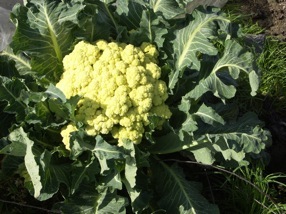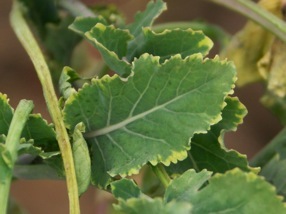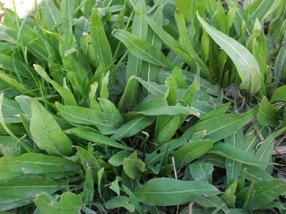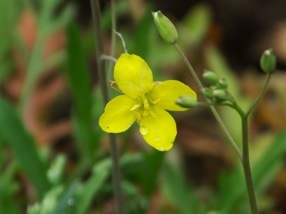
Perennial Brassicas
Here we go for a few, there are lots, but I'm trying to pick out the best,
nine star perennial broccoli : one of the best perennial kales, makes large cauliflower -like heads during springtime, these can weigh up to 1,5 kgs or even more! They are easily sown or can be grown on by cuttings. Don’t let the plants flower, or they’ll die!
ehwiger kohl (translation: eternal cabbage), good, tender leaves , good harvest, long lasting ( at least seven years) , propagated by shoots , frost tolerant , stays green during wintertime
chou Daubenton: quite comparable to the first one , but the taste is more a specific cabbage taste and not as tender as the above,
bunias orientalis, doesn't stay green in winter , but is a very early spring crop, popping up from the moment the temperatures start rising, the leaves are eaten, they too have a strong cabbage taste (I usually mix up these strong tasting ones with some milder tasting green leaves), I especially like the unopened flower heads, which can be prepared as broccoli, they have a nice taste, though they are small. So harvest takes a while... I don't know anything about the temperature resistance, they take -15 degrees Celsius over here, and I suspect they are hardier than the first two. I have plants for over 8 years now, and each year they seem to grow harder and faster, so they could be a very long surviving perennial crop. Be careful: they reseed very easily...
diplotaxis tenuifolia: is in fact a wild ancestor of aragula, being prepared or eaten the way aragula is prepared. It is a perennial with a short life circle, three to four years, taking at least - 15 degrees C. , the taste is very good, and it's a good summer aragula, which is quite useless in summer, because of early flowering (though the flowers are a good addition to salads)
sea kale:a very good perennial kale, the young shoots are eaten in spring time, after being bleached. It is an easy plant, if you have a sandy soil (I have a heavy loam soil, despite digging out the soil and putting in the sand, I kept on losing my plants, because of the wetness of the soil). These shoots are very tasty. Seed viability is very short, unlike most of the other brassicas; a better way to propagate them is taking shoots or cuttings from existing plants.
Because of my un-adapted soil, I can't tell how long the plants will last, though I read reports from 8-9 year old plants, still going strong. They do need a bit of protection during wintertime, even over here (they take down to -8 , a wet or dry soil will also make a difference)
walking stick cabbage, a huge cabbage which is perennial in a not too cold climate, but these have always been selected on the 'walking stick' caracteristics. the leaves can be used , again I prefer them mixed up with other, more tender leaves. They can become over 2 metres high, temperature resistance : about -8 degrees, I lost mine two winters ago. They don't really last long, three or maybe four years
barbarea vulgaris (winter cress), I'm not sure if this is perennial or not, it keeps coming back on the same spot, but I never really checked whether these are seedlings or a true 'perennial'. It is a good cress alternative for winter harvest over here, supporting low temperatures and sometimes disappearing in summer and popping up again a few months later ???. Easy to grow and good eating qualities
These are the most used perennial kales, there are some more, some are really rare. There are of course some other perennial brassicas, horseradish , wasabi, and ... but they have a whole other use than the ones mentioned above. I do like these as well however !





